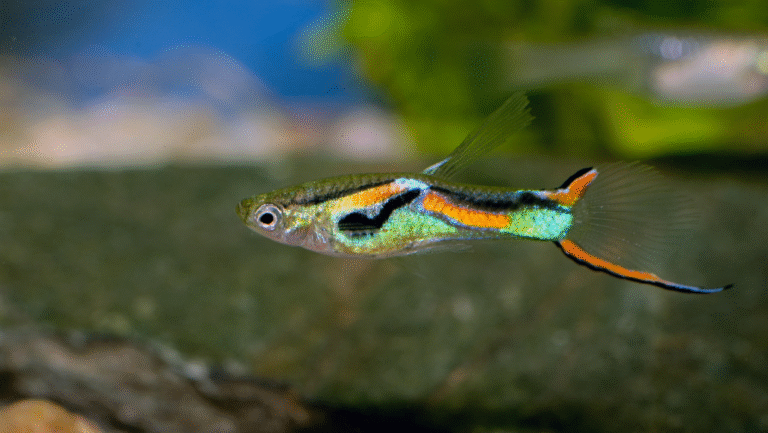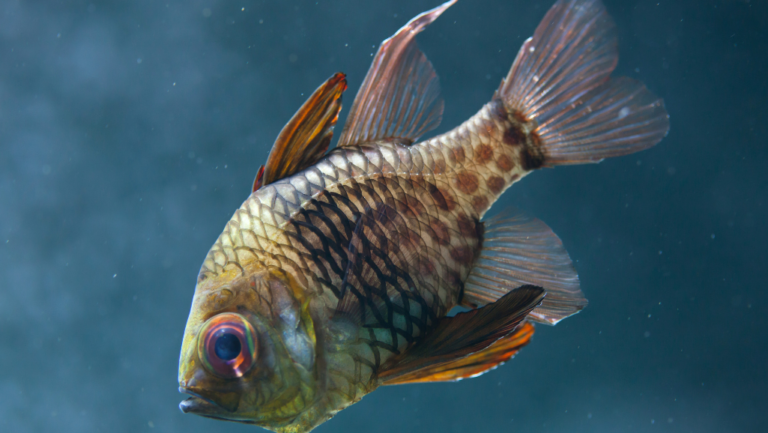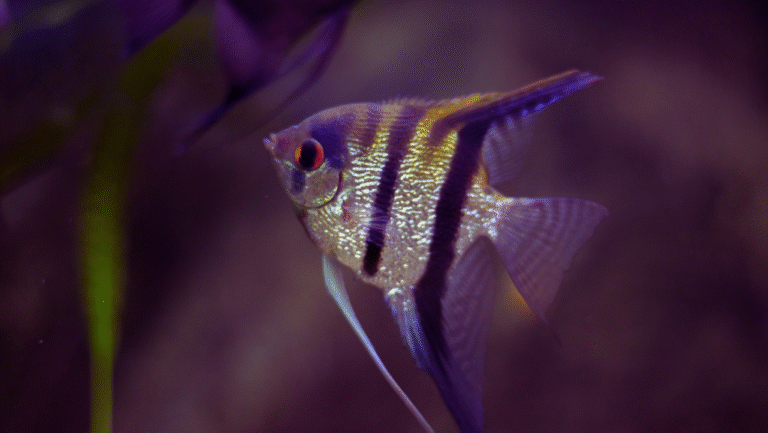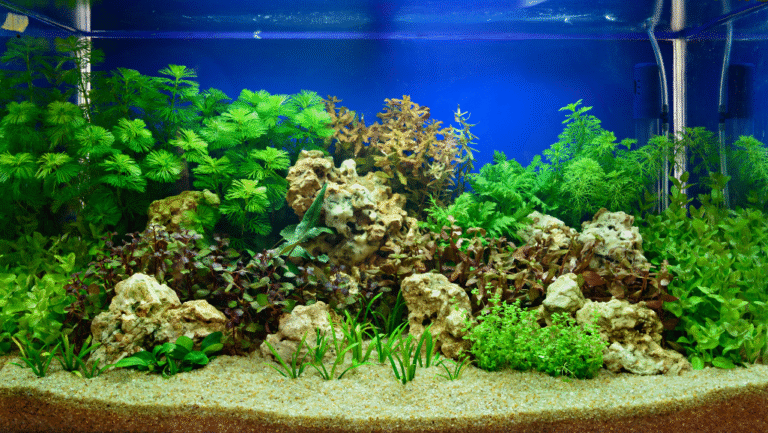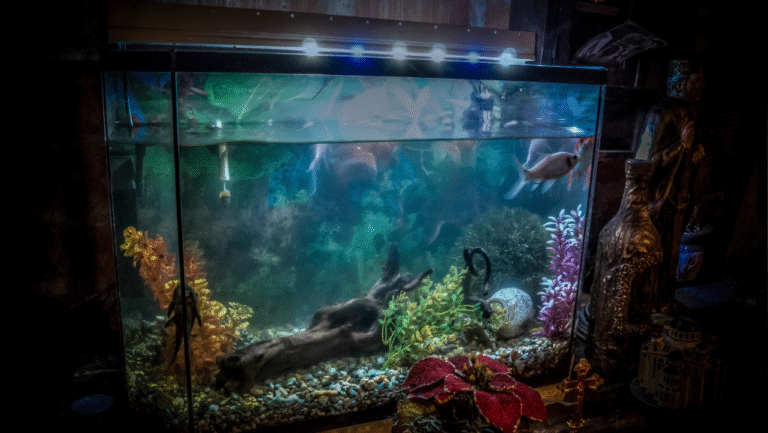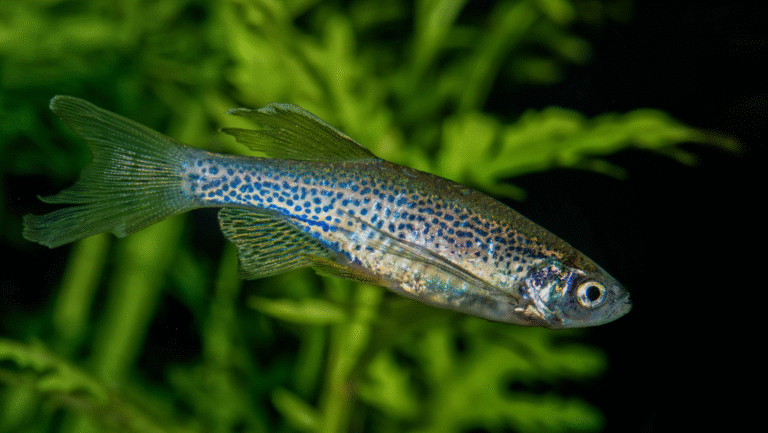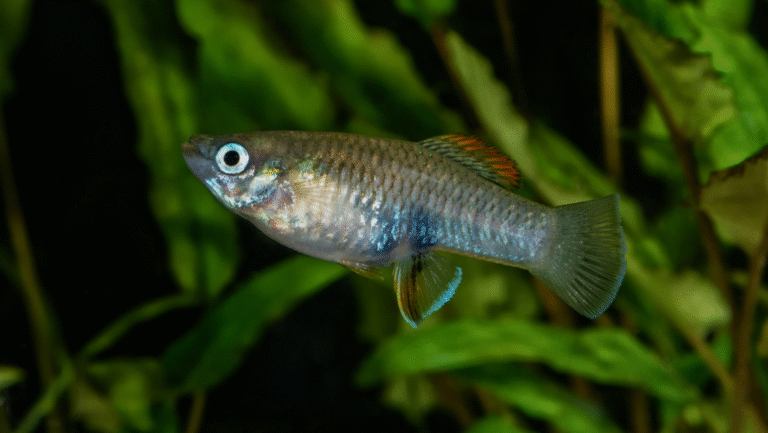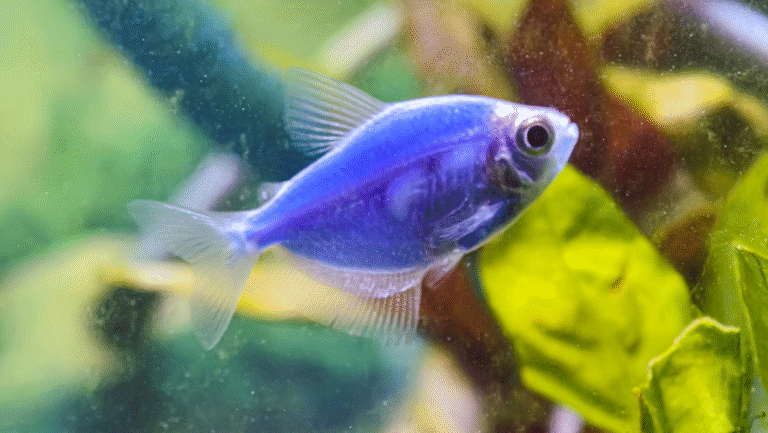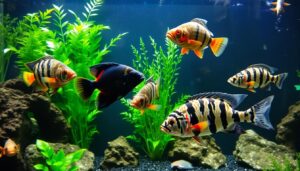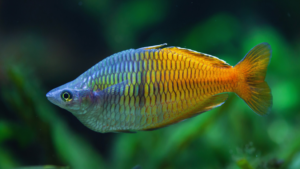Explore the amazing world of freshwater fish! There are over 15,000 types of these fish in lakes, rivers, and streams around the globe. They make up just 0.3% of Earth’s water but are incredibly diverse. From tiny nano fish to big predators, they come in many colors, shapes, and behaviors.
In this article, we’ll look at 10 examples of freshwater fish great for home tanks. These fish are perfect for both beginners and experts. They fit different tank sizes, care levels, and look preferences.
From the bright bettas to the hardworking catfish, each fish has its own special charm. Let’s explore the beauty and wonder of these aquatic wonders!
Key Takeaways
- Over 15,000 freshwater fish species exist in a tiny fraction of Earth’s water.
- Freshwater fish come in various sizes, colors, and care requirements.
- The 10 featured species are suitable for both beginners and experienced aquarists.
- Each species brings unique characteristics to home aquariums.
- Understanding different types of freshwater fish helps in creating balanced aquatic ecosystems.
Introduction to Freshwater Fish Species
Freshwater fish come in a wide range of colors, sizes, and behaviors. They live in many places, from fast rivers to calm ponds. Did you know that 41.24% of all fish live in fresh water? This shows how diverse freshwater fish habitats are around the world.
The Diversity of Aquatic Life in Freshwater Habitats
In the United States, freshwater fish are grouped into coldwater, coolwater, or warmwater types. Coldwater fish like in temperatures of 50 to 60°F. Warmwater fish prefer waters around 80°F.
This variety lets many freshwater fish live in different climates. It’s how they can thrive in various places.
Importance of Freshwater Fish in Ecosystems
Freshwater fish are vital to their ecosystems. But, they face big threats. In 2021, one-third of the world’s freshwater fish were at risk of disappearing.
Human actions, like pollution, put about 40% of North American freshwater fish at risk.
Popular Freshwater Fish for Aquariums and Angling
Many freshwater fish are popular for aquariums and fishing. For aquariums, the Bronze corydoras is a good choice. It likes temperatures between 77 to 82°F.
For fishing, bass and trout are exciting to catch. Whether you’re setting up an aquarium or going fishing, knowing about different fish species is important. It helps keep them healthy and makes your experience more fun.
Colorful Bettas: The Siamese Fighting Fish
Betta fish, also known as Siamese fighting fish, are stunning tropical freshwater fish. They are loved for their vibrant colors and flowing fins. These fish come in many colors, from classic reds and blues to rare shades like Blue Black Star Avatar and Metallic Purple.
Bettas live in densely vegetated habitats in Southeast Asia, like rice paddies and still-watered canals. In tanks, they need at least 2.5 gallons of water, but 5 gallons is better for their health. It’s important not to overfeed them, giving them 2-3 pellets once or twice a day.
Male bettas are territorial and should live alone. They can live up to 5 years with the right care, making them a good choice for beginners. Look out for signs of stress like fin clamping, which could mean the water quality is bad.
“Betta fish are living jewels, each with a unique personality and stunning array of colors.”
Breeders have created many color variations through breeding. Here are some popular betta fish colors:
| Color Variety | Description |
|---|---|
| Super Red | Solid red body and fins, no black or white spots |
| Turquoise | Solid blue-green color, ideal for competitions |
| Blue Mustard Gas | Blue body scales with mustard-colored fins |
| Super Gold | Dragon scales with intense, shiny gold coloration |
| Dark Armageddon Meteor | Rare color variant with unique patterning |
Betta fish are known for their beautiful looks and easy care. They continue to fascinate aquarium lovers all over the world.
Barbs: Hardy and Vibrant Aquarium Favorites
Barbs are popular fish known for their bright colors and tough nature. They are great for both new and experienced fish keepers. With many colors and patterns, they add beauty to any tank.
Popular Barb Species for Beginners
Many barb species are great for beginners. Some top picks are:
- Cherry Barbs
- Tiger Barbs
- Rosy Barbs
- Gold Barbs
- Checkerboard Barbs
Care Tips for Keeping Barbs
Keeping barbs healthy is key. They do well in groups of six or more. This helps them feel safe and looks great in your tank.
Barb Behavior and Social Dynamics
Barbs love to swim and play with each other. Some may nibble on slower fish, so make sure your tank is big and has hiding places. With the right care, barbs can be exciting additions to your tank, adding color and life.
| Barb Species | Average Size | Preferred Temperature | Minimum Tank Size |
|---|---|---|---|
| Cherry Barb | 2 inches | 73-81°F | 20 gallons |
| Tiger Barb | 3 inches | 75-82°F | 30 gallons |
| Rosy Barb | 6 inches | 64-72°F | 30 gallons |
Danios: Active and Adaptable Freshwater Fish
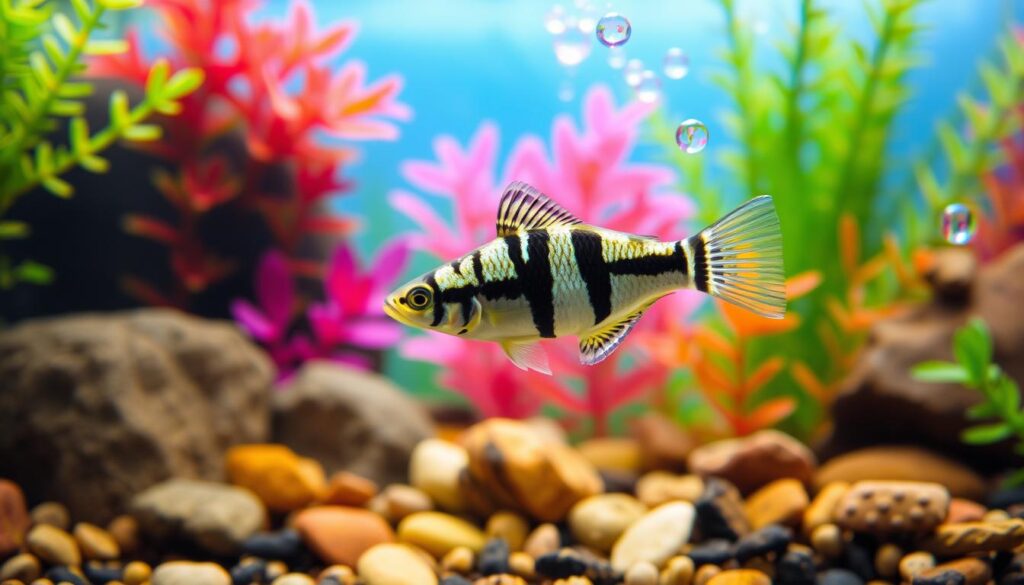
Danios are a favorite among those who love freshwater aquarium fish. They are small, lively fish known for being tough and easy to adapt. The zebra danio is a top pick in the danio family.
Zebra danios grow to about 2 inches long and can live up to 5 years with good care. They do best in groups of five or more, making them perfect for community tanks. They like water temperatures between 64-75°F and a pH of 6.5 to 7.0.
| Characteristic | Specification |
|---|---|
| Adult Size | 2 inches |
| Life Expectancy | 5 years |
| Minimum Tank Size | 10 gallons |
| Temperature Range | 64-75°F (18-24°C) |
Zebra danios are quick breeders, with females laying eggs every 2-3 days. They release 300-500 eggs in shallow water, which hatch in about two days. The young can eat commercial fry food or finely crushed flakes.
While zebra danios are common, other danio species have their own special traits. Giant danios can grow over 6½ inches, and pearl danios have a beautiful bluish to silvery shine. Danios bring excitement to any freshwater aquarium with their unique looks and lively nature.
Tetras: Schooling Fish with Brilliant Colors
Tetras are popular freshwater aquarium fish, known for their bright colors and schooling behavior. These small fish add life and movement to any tank. They are a favorite among hobbyists.
Most Popular Tetra Species
The neon tetra is a top choice among fish lovers. These tiny fish are only 1 inch long and should be kept in groups of at least 6. Their bright blue and red colors make them stand out in any freshwater aquarium.
Creating the Perfect Tetra Habitat
To keep tetras happy, create their natural environment. Use well-planted tanks with soft lighting. For 8-10 serpae tetras, a 8-10 gallon tank is perfect. Keep the water temperature between 72-76°F for most species.
| Tetra Species | Size (inches) | Recommended Group Size |
|---|---|---|
| Neon Tetra | 1 | 6+ |
| Congo Tetra | 3 | 6+ |
| Von Rio Tetra | 1.5-2 | 6+ |
Breeding Tetras: A Beginner’s Guide
Breeding freshwater fish can be rewarding, and tetras are easy for beginners. To encourage breeding, lower the water temperature and add fine-leaved plants for egg laying. Dim lighting and soft water conditions can trigger spawning in many tetra species.
“Tetras are the jewels of the freshwater aquarium, bringing color and life to any tank they inhabit.”
Guppies: Prolific Breeders with Stunning Varieties

Guppies are a top pick for those who love freshwater aquarium fish. These small, vibrant fish are easy to care for and breed a lot. They come in many colors and patterns, making any tank look alive and beautiful.
Female guppies can have up to 60 babies at once, which is amazing. This means they are great for breeding studies and programs. Their fast breeding helps scientists and breeders quickly test and improve fish traits.
Guppies are tough fish that fit well in many tank conditions. They like temperatures between 72-78°F and a pH of 6.5-8.5. This makes them good tank mates for other peaceful fish.
| Trait | Description |
|---|---|
| Size | 1-2 inches (2.5-5 cm) |
| Lifespan | 1-3 years |
| Breeding | Livebearers, up to 60 fry per birth |
| Color Variations | Numerous, including red, blue, yellow, green |
| Temperament | Peaceful, social |
Male guppies are known for their bright tails and fins. These features make them a hit in aquariums and breeding projects. To keep tanks from getting too crowded, many keep only male guppies. They are more colorful than females.
Guppies are loved for their beauty and easy care. They breed a lot and come in many colors. This makes them a favorite in the freshwater aquarium world.
10 Examples of Freshwater Fish
Freshwater fish come in many colors, sizes, and behaviors. They range from vibrant tropical fish to common ones found in ponds. Let’s look at 10 freshwater fish that are favorites among aquarium fans and fishermen.
Betta Fish (Siamese Fighting Fish)
Bettas stand out with their bright colors and long fins. They’re great pets because they’re tough and easy to care for.
Cherry Barb
Cherry Barbs are small and peaceful, known for their bright red color. They fit well in community tanks and brighten up any aquarium.
Zebra Danio
Zebra Danios are known for their active swimming and stripes. They’re easy to care for and perfect for beginners.
Neon Tetra
Neon Tetras are very popular. Their blue and red stripes shine brightly in any tank.
Fancy Guppy
Guppies are known for their many babies. They’re colorful and easy to take care of, making them a top choice for fish keepers.
| Fish Species | Size | Lifespan | Tank Size |
|---|---|---|---|
| Betta Fish | 2-3 inches | 2-5 years | 5+ gallons |
| Cherry Barb | 1-2 inches | 5-7 years | 20+ gallons |
| Zebra Danio | 2-2.5 inches | 3-5 years | 10+ gallons |
| Neon Tetra | 1.5 inches | 5-8 years | 10+ gallons |
| Fancy Guppy | 1-2.5 inches | 1-3 years | 10+ gallons |
Plecostomus (Sucker-Mouthed Catfish)
Plecos live on the bottom and eat algae. They come in many sizes and patterns, making them interesting for many aquariums.
Corydoras Catfish
Cory cats are peaceful and live on the bottom. They like to be in groups and get along with many other fish.
Kuhli Loach
Kuhli Loaches look like eels and add something special to tanks. They feel safe in groups and are good friends with fish like tetras and bettas.
Angelfish
Angelfish are beautiful with their long fins. They’re a great choice for big community tanks.
Dwarf Gourami
Dwarf Gouramis are colorful and calm. They have a special organ that lets them breathe air from the surface.
Catfish Varieties: From Plecos to Cory Cats

Catfish are popular freshwater fish known for their unique looks and helpful cleaning habits. Let’s dive into some fascinating catfish varieties that can be great for your aquarium.
Plecostomus: The Algae Eaters
Plecostomus, often called plecos, are famous for eating algae. The common plecostomus can grow up to 24 inches, while the bristlenose pleco reaches about 5 inches. These fish are great at keeping tanks clean. However, they need large spaces to do well.
Cory Catfish: Bottom-Dwelling Cleaners
Corydoras catfish, or cory cats, are peaceful fish that live on the bottom. They help keep the tank clean. There are many species, each with its own unique traits:
- Panda Cory: 2 inches long, lives up to 10 years
- Bronze Cory: 2.5 inches long, lives 5-10 years
- Pepper Cory: 2-3 inches long, lives about 5 years
Care Requirements for Catfish Species
Proper care is key for catfish. They need clean water, places to hide, and a balanced diet. While they eat algae, add sinking pellets to their diet. Cory catfish like being with others, so keep them in groups of six or more. Plecos need bigger tanks, at least 50 gallons for common species.
By understanding these catfish varieties and their needs, you can create a thriving aquarium. This will show off the beauty and usefulness of these fascinating freshwater fish.
Unique Freshwater Fish: Kuhli Loaches and Cichlids
Tropical freshwater fish lovers often look for unique species to add to their tanks. Kuhli loaches and cichlids are two groups that really stand out. They have special traits that make them favorites among fish keepers.
Kuhli loaches look like eels and live on the bottom of the tank. They like to be in groups and can grow up to 4 inches long. They can live for about 14 years. They need a tank of at least 50 gallons and like the water to be between 79° and 86° Fahrenheit. Kuhli loaches do well in tanks with soft substrates and lots of places to hide.
Cichlids are known for their bright colors and interesting ways of acting. They come in many sizes and personalities. For instance, the Bolivian Ram is a smaller cichlid that grows to about 3 inches and lives for 4 years. They need a 30-gallon tank and like the water to be between 72° and 79° Fahrenheit.
| Fish Species | Max Size (inches) | Lifespan (years) | Min Tank Size (gallons) | Water Temp (°F) |
|---|---|---|---|---|
| Kuhli Loach | 4.5 | 14 | 50 | 79-86 |
| Bolivian Ram | 3 | 4 | 30 | 72-79 |
| Bristlenose Plecostomus | 5 | 5 | 30 | 74-79 |
| Powder Blue Dwarf Gourami | 3.5 | 4-6 | 10 | 72-82 |
When picking between kuhli loaches and cichlids, think about your tank and your experience. Kuhli loaches are usually easier to care for. But, some cichlids can be harder because they need specific water conditions and might be aggressive. Both types of fish can be great additions to your freshwater tank, adding unique beauty and behavior to your underwater world.
Gouramis: Labyrinth Fish with Interesting Behaviors

Gouramis are a top choice for tropical freshwater aquariums. They belong to the Anabantoidei suborder, which includes Anabantidae, Helostomatidae, and Osphronemidae families. Their special labyrinth organ lets them breathe air. This makes them perfect for warm, slow waters with low oxygen.
Popular Gourami Species for Aquariums
Gouramis are loved for their bright colors and unique behaviors. Some favorites include:
- Dwarf Gourami
- Pearl Gourami
- Kissing Gourami
- Blue Gourami
- Honey Gourami
Special Care Requirements for Gouramis
Gouramis need special care to thrive. Here’s a quick guide:
| Parameter | Requirement |
|---|---|
| Tank Size | Minimum 5 gallons |
| pH Range | 6.0 to 7.5 |
| Water Hardness | 4 to 10 dGH |
| Temperature | 72 to 82°F (22 to 28°C) |
| Lifespan | 4-6 years |
Gourami Behavior and Social Dynamics
Gouramis show interesting behaviors that make them unique. Males build bubble nests for breeding. Females lay up to 800 eggs, and the fry hatch in 24 hours. They start eating brine shrimp after a week.
While mostly peaceful, some gouramis like the Siamese fighting fish can be territorial. They need their own tanks to avoid fights.
Choosing the Right Freshwater Fish for Your Aquarium
Choosing the right fish for your aquarium is key to a healthy underwater world. Think about the tank size, water quality, and how well fish will get along. A 10-gallon tank is perfect for both new and seasoned fish keepers.
For smaller tanks, go for schooling fish like neon tetras or cherry barbs. These fish bring color and activity to your aquarium. Neon tetras grow to 1.5 inches and can live up to 5 years with good care. Cherry barbs are great for breeding and prefer dense plants.
Kuhli loaches are peaceful and make great tank mates. They do well in groups of three to six and get along with other fish. Fancy guppies add elegance with their many colors and fit well in 10-gallon tanks.
| Fish Species | Adult Size | Life Expectancy |
|---|---|---|
| Neon Tetra | 1.5 inches | 2-5 years |
| Fancy Guppy | 1-2 inches | 3-5 years |
| Kuhli Loach | 3-4 inches | 3-5 years |
For unique fish care, consider the white cloud mountain minnow. It’s a cold-water fish that does well in non-heated tanks, perfect for offices or classrooms. The dwarf platy is another great choice, staying about 1 inch long and eating a lot to keep the tank clean.
Good fish care means regular water changes and keeping the tank right. Changing the water 10-20% each week helps keep nitrates low, making a healthy home for your fish.
Conclusion
The world of freshwater fish species is full of diversity. It shows us the beauty of life in our rivers, lakes, and streams. From the vibrant bettas to the hardy barbs, there’s a wide range of fish for hobbyists.
Popular fish like tetras, guppies, and gouramis do well in the right tanks. Catfish, such as plecos and cory cats, help keep the tank clean. If you want something unique, kuhli loaches and cichlids have interesting behaviors and looks.
When picking fish for your tank, think about the tank size, water conditions, and how well the fish will get along. A 75-gallon tank can hold many species, from colorful discus to schooling tetras. With the right care and environment, your fish will thrive. This brings beauty and life to your home and deepens your love for freshwater ecosystems.


